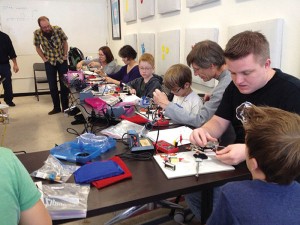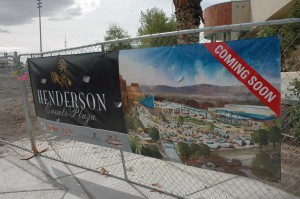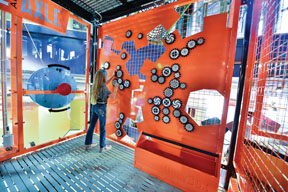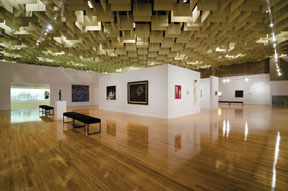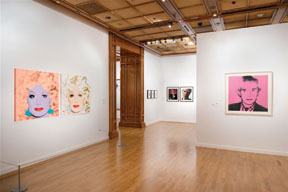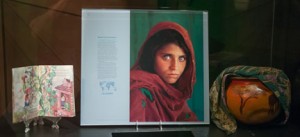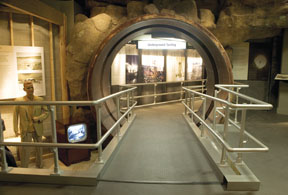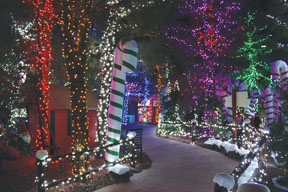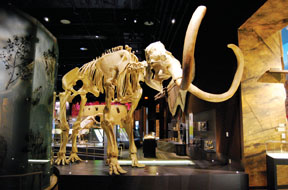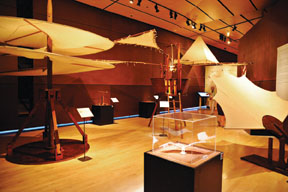DIY in the DTLV
Raise your hand if you knew, tucked away in Downtown Las Vegas, you had access to a space, tools and classes that could make all of your Do It Yourself (DIY) dreams come true? Anyone? Bueller? We didn’t either, but we’ve since discovered it, and we’re intrigued. Syn Shop, The Las Vegas Hackerspace (117 N 4th St., www.synshop.org) in the heart of Downtown Las Vegas is a collective working space for self-proclaimed “makers” a.k.a. tinkerers, artists, designers, inventors and just those interested in learning a craft.
Hackerspace?
If you’re picturing a dark room, lit only by computer screens as a full-fledged government database breach is taking place, you’re not alone. We have an idea of what “hacker” means, and the picture normally isn’t pretty. In fact, a “hackerspace” is much less diabolical and much more geared toward creating a community of likeminded individuals who are interested in “making things.” It’s become a movement in the last decade spawning similar co-working spaces in cities around the nation.
Walking in to Syn Shop feels more like woodshop than a computer lab. The roughly 2,500 square foot area is an eclectic fusion of classroom space, tools (not so much hammer and nails…more like 3D printers, sewing machines and the granddaddy of all CNC precision wood cutters, the Shopbot) and resident “projects” like the empty, beat up vending machine patiently waiting for a revival. Maybe it will be used “Google-style” to house computer peripherals like keyboards or mice instead of soda and potato chips. Time will tell.
From the sign that greets you as you enter (“Stay hungry, stay foolish”) to the almost life-sized Darth Vader head fashioned from layers etched out by one of the precision cutters, the Syn Shop achieves a playfulness and whimsy around creation. As an admittedly fair weather hobbyist, I felt pumped to build something the second I stepped foot in the building. Even the smell of the place, a hint of burnt plastic and sawdust, makes you feel productive.
How Does It Work?
A quick visit to the Syn Shop website may be a little intimidating. The premise of the space is, after all, based in technology. However, if you’ve not brushed up on your Boolean Logic, never fear. Syn Shop co-founders Pawel Szymczykowski and Susan Hinton assure that the space is perfect for all kinds of hobbies – from computer networking to needlecraft. It’s a dream it, do it mentality and all-walks (men, women and children) from across the city, including Henderson and Summerlin, swing by the shop to get their creative fix.
Visitors can take advantage of the space in two ways: attend public classes (averages about $20 per person) or become a member (starts at $40/month). Classes at Syn Shop run the gamut. If you’re a tinkerer, live to figure out how things work and like to indulge in a little geeky (that’s a term of endearment) catharsis you may opt for DIY World Domination Night on Mondays, dedicated to robots and technology. If you’re itching to learn how to sew, or make adorable jewelry with a 3D printer like co-founder Sue Hinton, you’re likely to join in on Wednesday craft nights. Upon perusal of upcoming classes we note everything from “Building Wearable Tech Butterfly Wings” to “DIY Chocolate Treats” and beyond. And leaders of the shop are always taking suggestions, as well as welcoming new potential teachers who would like to share a skill.
Children are encouraged and there are often no age limits for classes, but will be stated if that’s the case. Instructors are professional, and focus on safety especially in classes dealing with electricity or cutting. Much of the time materials are provided, unless indicated otherwise. The facility is open Monday-Thursday from 6 p.m. to 10 p.m. and Saturday from 3 p.m. to 10 p.m.
Syn Shop also hosts the annual Las Vegas Mini Maker Faire, where they showcase exhibitors, inventors and artists as well as hold workshops. Last year nearly 700 people attended the event, scheduled for Saturday, April 5, 2014 from 10 a.m. to 7 p.m. at The Learning Village in Downtown Las Vegas (715 Fremont St.). For more information about Syn Shop visit www.synshop.org. For more on Maker Faire Las Vegas visit www.makerfairevegas.com.
A Decade of Development – Ten Years in the Life of Henderson, NV
By Aly Wagonseller
Maybe you remember 2004. The Zip Code Magazines had just hit the scene with our first issue of 89052, and our city of Henderson was in full bloom, growing at a phenomenal rate and making a name on both the local and national levels as one of the best places for a growing family to take roots. Then….well… most of us remember what happened in 2007 and beyond. The housing bubble debacle left many small town government entities low on property tax revenues, leaving little resources available for much more than simple survival.
Fast forward to today and you’ll discover that despite some bumpy years on the economy front, Henderson, Nevada has continued to flourish. Growing in population by more than 36,000 people in the past decade, the city has added new entertainment venues, parks and trails, and businesses to enhance a community lifestyle that delights all of us who call Henderson home.
Here’s a look back at a few of the larger additions to Henderson that we’ve written about over the past ten years, and why they continue to make Henderson the city we love.
That’s Entertainment
Besides the Henderson Pavilion, a facility opened in 2002 that continues to provide world class productions for the masses, Nevada’s first public outdoor events space, The Henderson Events Plaza, joined the party in 2006. Located adjacent to Henderson City Hall and the Henderson Convention Center, the facility seats 900 attendees and is the hub for many of the Downtown Water Street District events. The ArtBeat series sponsored by Target is one of the many family friendly activities offered at the Events Center, allowing kids and grownups alike to experience art displays, crafts, demonstrations and concerts. In addition to this family friendly affair, the Henderson Events Plaza hosts several signature events throughout the year. Annual events include:
- Heritage Parade and Festival
- St. Patrick’s Day Parade and Festival
- Super Run
- Art Festival of Henderson
- Ho’olaule’a Festival
- WinterFest
- Off-Road Desert Race
For dates and information about these and other events, visit www.Hendersonlive.com.
Encompassing the surrounding areas of the Event Center and City Hall, The Downtown Water Street District has also seen changes over the past ten years. A Redevelopment effort has readied the area for future growth, allowing for more convenient parking and ease of doing business for retail stores, bars and restaurants. The new Historic Walking Tour in the area offers a stroll that’s just under a mile and includes an informative and colorful account of the development of Henderson, starting with its birth during the industrialization period to support World War II efforts to the vibrant city it has become today. To begin the self-guided tour, visit the front desk in the Henderson Convention Center to pick up the tour map, or go to www.waterstreetdistrict.com for a downloadable version of the tour.
For the Active Family
Unlike many communities that had to cut back on developing parks and recreational trails, Henderson has several new additions to the landscape. The 160-acre Heritage Park, located at 350 Racetrack Rd., is the largest multi-use sports complex in the Las Vegas Valley. It features 13 lighted, full-sized multipurpose fields and two lighted 90-foot baseball fields. The campus is also home to the 5-acre Bark Park dog park, LEED Gold certified Heritage Park Aquatic Complex, and the 29,667-square-foot LEED Gold certified Heritage Park Senior Facility. The 100-acre Cornerstone Park, 1600 Wigwam Pkwy., opened in June 2013, and is accented by a 31-acre lake. Housing running trails and a tranquil, suburban-like feel, the park hosts some of the city’s most visible outdoor events including Bark in the Park and the Southern Nevada Trails Day Celebration. Also in 2013, Whitney Mesa Recreation Area, 1661 Galleria Dr., opened for public use featuring a lighted tennis complex, basketball court, playground, archery range, day camp, and a walking course, along with a representation of the architecture that resided in decades past.
In addition to developed parks, the pristine wilderness in the Henderson area has become easier to explore with the designation of several new trails in the landscape. Most notable is the River Mountains Loop Trail whose paths were dedicated as a National Recreation Trail in May of 2010. The 35-mile paved multi-use and multi-jurisdictional trail connects Henderson, Boulder City, Hoover Dam and Lake Mead National Recreation Area to the rest of the Las Vegas Valley, providing ample opportunity for hiking and sightseeing in the area. For information on trails and parks in the City of Henderson, visit www.cityofhenderson.com.
The past ten years have been a challenging, yet successful time for our award winning city. With prudent fiscal responsibility and a master plan aimed at creating superior quality of life for its residents, we can rest assured that the future of Henderson’s looking bright.
Dream, Create, Inspire, Learn – The Children’s Discovery Museum
By Meghan Pescio
As a Las Vegas native, some of my clearest and fondest memories of my childhood are of annual field trips to the Lied Discovery Children’s Museum. The bus would stop, my classmates and I would pour out and get completely lost in a whimsical world of dress up, curiosity and make believe. Entering the new DISCOVERY Children’s Museum located in Symphony Park alongside The Smith Center, that feeling of wonderment and fascination returned. I was welcomingly swept right back into my childhood as I wandered from exhibit to exhibit. The new location harkens back to the good ol’ days of Lied, and so much more.
From the River to “The Summit”
The mission of the museum to create a hands-on and engaging experience for children is immediately evident as you enter and are greeted by a giant apparatus that literally lifts a car, permitting the little lifter to dictate how much pressure he or she will need to do so. Every inch of the three-story, 58,000 square foot building allows for active and practical learning encounters. Exhibits such as “Water World” on the first floor create a different experience for each age – splashing around for the little ones and a deeper understanding of water’s movement and power for school aged kids. Even the adults will learn a thing or two.
A new addition to the museum is known as “The Summit” and it is as powerful as it sounds. Scaling the full three stories of the building, this 70 foot tower of entrancing educational adventures could keep you occupied for hours on its own. From giant ears to a spacecraft and an incredible view upon reaching the top, “The Summit” is a refreshing challenge of both body and mind.
Other exhibits new to those of us with Lied nostalgia, work not only to create fun environments for children to learn, but also give them practical knowledge for choices they will have when (or if) they decide to “grow up.” The “It’s Your Choice” exhibit is dedicated to health and wellness, and with live classes (taught by employees daily around the museum) about skincare in the sun and interactive games about food choice and exercise, I felt like I should be taking notes. “Eco City” mixes some old with the new as you will recognize children shopping in a Smith’s grocery store and pondering fiscal responsibility in the nearby Wells Fargo, but be pleasantly surprised by a new focus on environmental sustainability and community. The “Solve It!” exhibit puts a premium on analytical thinking as it leads you through a mystery and asks you to collect evidence, scrutinize it and crack the case.
Creative Flare
While pragmatic decision-making is important for the real world, the museum isn’t only for our left-brained offspring. Exhibits that celebrate imagination and creativity light up each floor – you can almost hear the little minds buzzing! “Fantasy Festival” on the first floor is a dreamlike hodgepodge of ships, castles and, of course, the giant stage that graced the former museum floor, complete with purple curtains and a box of costumes. “Young at Art” is reminiscent of a young Salvador Dali meets Dr. Seuss as colors melt off the walls around pink zebras and other human-like animals. My personal favorite, “Patents Pending,” is a brilliant tribute to the tinkerers, inventors and creators among us. Encouraging our future generation to “Dream,” “Design” and “Invent,” the exhibit offers future engineers the equivalent of a canvas to an artist.
As I followed the trail of tears from children prematurely pried from their fun, having been asked to leave this fantasy land by the parents or teachers who also secretly wanted to stay, I noticed a tribute to facility donator Donald W. Reynolds Foundation. The last line states the mission of the foundation to support organizations that “demonstrate a sustainable program, entrepreneurial spirit, and assist those served to be healthy, self-sufficient and productive members of their community.” The DISCOVERY Children’s Museum, at whatever location in the big neighborhood we call home, does just that and is a landmark to be proud of and patronize- at any age.
For more information on visiting, becoming a member or participating in programs of the DISCOVERY Children’s Museum visit www.DiscoveryKidsLV.com
Art for the Masses – The Dorothy and Herbert Vogel Collection
By Mike Sweeney
When we think of art collectors, our minds probably reflect images of snooty high society types on the Upper West Side debating the suggestive dichotomies of Jean-Michel Basquiat. Dorothy and Herbert Vogel feel like a breath of fresh air in that respect. Once described as “proletarian art collectors,” this humble married couple from New York built an impressive assembly of modern art with a sharp perspective and a notable lack of pretension. Local residents now have a chance to examine stunning pieces from the couple’s diverse art holdings at UNLV’s Barrick Museum.
Meet the Vogels
Before you venture into the main gallery, treat yourself to an intimate look at the Vogels themselves with a viewing of the award winning documentary Herb & Dorothy in the museum’s theater. The Vogels certainly didn’t fit the typical image of the modern art collector. Herb was a clerk with the Postal Service while Dorothy worked as a reference librarian in Brooklyn. Both began as artists themselves but later gave it up in favor of collecting. Starting in 1962, the couple used Dorothy’s income to cover living expenses while Herb’s salary was dedicated to procurement. Within a few decades, their collection had amassed some 4,000 works. Motivated by their desire to share their passion, a program was developed where fifty works from the collection would be shared with one institution in each of the fifty states, with UNLV chosen as the site for Nevada.
Mixed Media
One of the most interesting things about The Vogel Collection comes from its variance of media. From graphite and watercolor to paper mache and charcoal, a diverse range of form represents Herb and Dorothy’s eclectic tastes. Some works are as simple as ink, marker or colored pencil on paper, such as the cartoon like figures in Mark Kostabi’s “The New Irascibles.” Bettina Werner’s “Campi Neri de Pensiero” features salt and resin on a plastic panel, reminiscent of a carved out chunk of highway with stylistic imperfections. Martin Johnson’s “Take a Chance on Being Here” combines logos, ads, lottery tickets and more in a pop culture explosion reminiscent of Warhol at his most trenchant. One of the most fascinating uses of media is Stephen Antonakos’s untitled Greek travel collages. Seven small frames incorporate items such as hotel soap, stamps, coins, twigs, pull tabs and more, turning the detritus of a Mediterranean visit into an artistic travelogue.
Color and Style
Looking at the collection as a whole, there are common threads that stand out, one of which is the dynamic use of color. Bright hues shine on Michael Lucero’s untitled butterfly watercolor, so much so that you can almost feel it flying out of the frame, while Daryl Trivieri’s luminous Picasso like ornithological renderings seem imbued with a life both natural and surreal. The colored pencils of Richard Tuttle’s “Happy Birthday Herb” series are as much about the space between the pastel lines as the lines themselves. Even Claudia DeMonte’s paper mache and acrylic family life scene seems to come alive through the artist’s vibrant expression.
The collection also celebrates minimalism in many of its works, with simple approaches yielding bold artistic dividends. Edda Renouf’s “Mahan-Iran” may seem like a blank sheet of paper at first glance, until you notice the intricate incised marks that bisect the canvas. The inscriptions are so slight, yet there is elegance in their symmetry. The same goes for the unadorned charcoal and pencil lines of Steve Keister’s untitled work or the straightforward pastels of Mark Kostabi’s “Nose Off,” both of which evoke boldness and self assurance. Others play with language, such as Robert Barry’s untitled piece with words inscribed at its edges in graphite: “evidently,” “partial,” “internal.” All of them etched in faded strokes, giving the work an ephemeral quality. These examples prove that you don’t have to fill up all the white space on your canvas to stir the soul.
Modern art may not be everyone’s cup of tea, but Dorothy and Herbert Vogel certainly had a good eye for artistic quality and expression that was at once minimalist and multifaceted. Take some time out to judge for yourself and you’re sure to find something that captures your fancy.
For more information on The Dorothy and Herbert Vogel Collection, visit barrickmuseum.unlv.edu.
Pop Goes the Easel – Warhol Out West
By Mike Sweeney
Few icons of the modern art world loom as large as the talented and eccentric Andy Warhol. His stylistic pop art masterpieces have captivated the public for decades, with colorful paintings and glittering screen prints making as indelible an impression as his shock of white hair. Las Vegas residents now have a chance to enjoy some of the master’s works at the “Warhol Out West” exhibit, now on display at the Bellagio Gallery of Fine Art, which features many of Warhol’s depictions of celebrity, advertisements, brand products and other hallmarks of popular culture.
Once Upon a Time in the West
One of the most impressive parts of the exhibit is Warhol’s rarely seen “Cowboys and Indians” series, which explores the myths and folklore of the American West. Historical figures such as Annie Oakley, Geronimo and George Armstrong Custer come to life in dazzling screen prints, where brilliant colors mix with Warhol’s unique aesthetic to take them out of reality and propel them into legend. It’s fitting, then, that the series includes a portrait of John Wayne, who elevated fanciful notions of the American cowboy to new heights. The series also portrays images of Native American life in the same Warhol style. While it may seem contradictory for a pop art devotee to explore such a seminal part of American history, we must remember that Warhol brings his sensibilities to it. He’s dealing not in reality but rather our perceptions of it.
Cultural Learning
With the proliferation of advertising and social media, we are bombarded by pop culture in ways that Warhol could only dream about. Still, his remarkable skill for capturing the consumer zeitgeist is on full display here. Corporate logos for titans such as Paramount, Apple and Chanel practically explode out of their frames with stunning colors and flair. Even something as simple as a can of Campbell’s soup transforms into an artistic likeness so ingrained in our culture that it has come to stand as the defining image of its creator’s work. Warhol saw it as more than just a can of soup; he saw it as something completely emblematic of the American way of life, something we all have in common. After all, who doesn’t enjoy a hot bowl of soup on a cold night? These simple painted and framed representations of soup cans show the power of art to bring us together and connect our disparate lives through the most seemingly insignificant things.
Famous Faces
Warhol’s fascination with celebrity is represented throughout the gallery, most notably in a series of Polaroid photographs taken of famous friends by Warhol himself. These snapshots of celebrities such as Sylvester Stallone, Truman Capote, Dennis Hopper, Princess Caroline and many more were taken against a bare backdrop with a direct flash, casting the normally luminescent stars in a somewhat unflattering, “real” light. These aren’t the polished photo portraits of Annie Leibovitz; these are pop culture candids, raw and unprocessed. It shatters our familiar airbrushed notions of celebrity and makes these cultural icons that much more relatable.
While the Polaroids may lean more toward realism, Warhol’s screen prints of figures such as Dolly Parton, Georgia O’Keefe and others (himself included) pop with his usual color and style. Even the ubiquitous Mona Lisa finds herself reworked by Warhol’s hand. With multiple images of art history’s most famous woman in various sizes, Warhol not only expresses our obsession with mass production but also our fondness for celebrities, even ones dating back to the Renaissance. One of the most famous celebrity portraits on display here has to be the renowned silkscreen print “Double Elvis” which features a bifurcated image of the King taken from a publicity still for the western film Flaming Star. Striking a cowboy pose, his six shooter pointed right at us, the image once again connects western clichés with the alluring power of celebrity.
“Warhol Out West” gives us an intimate look at one of pop art’s greatest icons and helps to further his intent to challenge our notions of consumerism, celebrity and our perceptions of the world. Warhol saw things in a unique light, and this exhibit gives us the chance to do the same.
For tickets and more information, call 693-7871 or visit www.bellagio.com/bgfa.
Picture Perfect – 50 Greatest Photographs of National Geographic
By Mike Sweeney
If a picture is worth a thousand words, then the photographs published by National Geographic magazine over its 125-year history are worth volumes. From stark reflections of nature’s power to candid shots of wildlife in their natural habitat to portraits of simple humanity, these are photos that have become an indelible part of the world’s public consciousness. Now you can view some of these celebrated and iconic images for yourself at the 50 Greatest Photographs of National Geographic exhibit, housed at the Imagine Exhibitions Gallery at The Venetian.
Photo Finish
While you may recognize many of the famous photos on display, you’ve never seen them quite like this. Each image has been significantly enlarged to provide a close look at every detail. Vivid colors leap out of the frame. You can practically feel the grit of the Afghan desert, the bite of the arctic wastes or the roar of a Lockheed jet engine. Each stunning work of art is accompanied by a brief “story behind the picture,” offering personal recollections from the photographer along with important social and historical context. A map also shows where each photo was taken, illustrating the global scope of the artists’ work, while documentary videos throughout the exhibition give even more insight into the snapshots. Some displays even feature “near frames” taken by the photographer: the sequence of images that led to the perfect photo.
Natural Selection
The incredible range of work on display highlights the wide array of subject matter that National Geographic has covered over the years, most notably the wonders of the natural world. You would be hard pressed to find a more intimate look at the animal kingdom. A half-blurred shot catches a wild elephant in mid-charge, its eyes turned an ominous red by the photographer’s flash. A herd of camels crosses the Kuwaiti desert, black silhouettes in the shadow of raging oil fires from the first Gulf War. A lion stares right into the lens with glassy eyes, his jaws locked around a rival’s throat in a fight to the death. The awesome power of nature comes alive as well, with enthralling shots of a tornado on a South Dakota highway, the sun-baked salt flats of Lake Assal in Djibouti, and a towering vertical photograph of a California redwood so massive that it had to be composited from over eighty separate shots taken from a customized camera rig.
Being Human
Aside from its evocative imagery of the world around us, the exhibit showcases a moving portrayal of humanity at its most personal and socially conscious. Faithful Muslims gather around the Kaaba at the Al-Haram Mosque in Mecca. French teenagers laugh and enjoy life while riding a riverboat down the Seine. Two young girls swim in the Dead Sea on the West Bank, the violence and politics of the region forgotten in a moment of stillness. From the sadness of a young Peruvian child to a lonely cowboy in an Elko, Nevada bar to Jane Goodall interacting with her beloved chimpanzees, these photos capture the intimacy of the human condition.
But of all the stories captured by National Geographic, none is more stirring and unforgettable than Steve McCurry’s renowned photo of the “Afghan Girl,” which is given special prominence in the exhibit. Taken at a refugee camp in 1984 during the Soviet occupation of Afghanistan, the photo portrays a young girl staring into the camera with piercing green eyes. Etched on her face, we can see the horrors of poverty and war, forever frozen in time with unforgettable austerity.
The best photographs have the power to captivate us with a single image and leave an emotional impact that we will always carry with us. Some may delight you and some may haunt you; either way, the 50 Greatest Photos of National Geographic will certainly make a lasting impression.
For tickets and more information, call 414-9000 or visit www.venetian.com.
Duck and Cover – The National Atomic Testing Museum
By Mike Sweeney
For good or bad, the development of the atomic bomb was a landmark moment in American history, one in which the state of Nevada played a key role. During the 1950s, mushroom clouds were visible for over 100 miles during above ground atomic explosions conducted at the Nevada Test Site. It’s fitting, then, that Las Vegas now plays home to the National Atomic Testing Museum, a travelogue through the legendary chronicles and ominous wonder of the nuclear age.
Ground Zero
Presented in association with the Smithsonian, the museum paints a vivid picture of life in the shadow of the bomb, from President Truman’s establishment of the Nevada Test Site in 1950 to the superpower arms race to the development of new technologies such as nuclear reactors. Foreboding photos of mushroom clouds, nostalgic literature, and casings from nuclear weapons bring the bygone days to life, along with artifacts such as Geiger counters and atomic age toys and games. Take time to hear the reflections of those who worked in the field and former employees of the Nevada Test Site, which helps place a human face on the historic undertaking. More stoic are the faces of the fully dressed mannequins on display, just like the ones meant to measure the bomb’s effects on humans. You can feel the power for yourself at the Ground Zero Theatre, where you’re in the viewer’s seat for a sensory experience that simulates a nuclear test.
An important part of the museum’s ambiance is creating a sense of historical perspective. A detailed timeline stretches throughout the halls, illustrating how significant events in nuclear testing lined up alongside milestones in politics, entertainment, and pop culture. Follow the history of testing as it begins above ground, moves beneath the surface, and then disappears altogether from the American landscape as new applications emerge. The Cold War expands before your eyes as fears over Soviet dominance give rise to nuclear proliferation, but as years pass, former enemies come together to sign test ban treaties. We also get a look at the Nevada Test Site’s role in the modern era, which includes the training of emergency response teams, a vital mission in a world where the threat of terrorism looms larger than Iron Curtain animosity.
This Land is Your Land
While the museum places its primary focus on the atomic age, there is much more to learn about the physical area that includes the Nevada Test Site. The “Stewards of the Land” galleries detail the unique geological history of the location and allow visitors to study the environmental impact of nuclear testing on natural elements such as faults, rock strata and aquifers. Other displays seek to educate guests on radioactive contamination and the effect it has on important factors such as water sources and waste management. Delve deeper into the land’s history with a captivating look at the area’s indigenous people, the Paiute and Shoshone, along with a study of the early settlers who made a living as miners and ranchers long before the sounds of man-made thunder.
Little Green Men
The museum hosts temporary exhibitions in the Harry Reid Exhibit Hall, where you’ll currently find “Area 51: Myth or Reality,” which provides an in-depth look at one of the more fascinating and controversial aspects of Nevada lore. After a televised “briefing” from a shady secret agent, you’ll proceed into the exhibit hall, full of atmosphere with its maze-like interior cloaked in dark fabrics and eerie glowing lights. The displays cover all aspects of the enigmatic “Dreamland” itself, along with everything from military flight history to far-reaching endeavors such as the Voyager probe to rumors of alien encounters like the Roswell crash and the infamous “alien autopsy” film. There’s even a section on local investigative reporter and UFO enthusiast George Knapp. Whether you choose to “believe” or not, it’s an entertaining mystery to investigate.
The marvel of the atomic age may be nothing but a phantom of the past, but the influence and significance of that period in history has stayed with us and still shapes our lives to this day. While the saga of Southern Nevada will always be dominated by memories of gangsters and gambling, the National Atomic Testing Museum reminds us that the Silver State helped shape the cultural landscape of modern America, creating an enduring legacy for future generations.
For more information on the National Atomic Testing Museum, visit www.nationalatomictestingmuseum.org.
Land of Enchantment…Magical Forest at Opportunity Village
By Mike Sweeney
For nearly six decades, Opportunity Village has been improving the lives of those with intellectual disabilities through vocational training, local employment, social recreation, advocacy and much more. When the holidays roll around, the local nonprofit gives a wonderful gift to the Las Vegas community with its annual Magical Forest, a holiday spectacular that lights up the night and the hearts of all those involved by creating an awe inspiring winter spectacle.
Into the Woods
A longstanding Southern Nevada tradition that draws visitors from all over the valley, the Magical Forest combines the best of traditional holiday merriment with unique and inventive displays and attractions. As you pull into the parking lot at CSN and approach the main gates, you can already feel the spirit of old Saint Nick. Sparkling lights, festive decorations and lively music come together to create three full acres of Christmas delights for all ages. As you step up to the box office to purchase your ticket, you’re sure to feel tidings of great joy knowing that all proceeds from the inspiring event go to benefit the people and programs of Opportunity Village.
Follow the winding path through the namesake attraction to discover a world of true seasonal magic, where a forest of glittering trees cast a dazzling glow. Impressive holiday displays line the walk, many sponsored by local corporations or charities, including everyone from Caesars Entertainment to LVMPD to the Blue Man Group. Exhibits from years past have featured everything from gigantic storybooks to shimmering fairy tale coaches to famous characters such as Charlie Brown and the cantankerous Grinch. Every bend in the road includes new wonders to delight your eyes and engage your senses. You might even run into a playful polar bear and a few helpful elves hustling to get all the toys shipped out of Santa’s Workshop. Pay a visit to the workshop yourself and you’ll get a chance to have your photo taken with old Kris Kringle.
Winter Wonderland
When your path through the forest ends, the fun is just beginning! Next up, hitch a ride on the Forest Express. Launching from the North Pole Train Depot, this festive iron horse transports you on a tour of the entire property, where you can wave to people walking through the forest as you depart on a magical journey. If you’re more of a thrill seeker, there are plenty of carnival rides and games to strike your fancy. Sharpen your putting skills at Rod’s Mini-Golf or take a spin on the delightful Enchanted Carousel. Riding a decorative wooden horse around and around amid the glowing lights is sure to awaken holiday memories in even the most cynical grown up.
Once you’ve had your fill of rides and games, you may be feeling a bit hungry, so why not take a snack break to munch on some funnel cake or sip some hot chocolate while you enjoy the festive atmosphere. The winter air might get a bit chilly from time to time, but you can warm up (and entice your sweet tooth) by ducking inside to view an amazing display of gingerbread houses. These artistic creations showcase a range of incredible talent and imagination while looking good enough to eat. Maybe you’ll even get inspired to go home and create one of your own.
While the delights of the the Magical Forest help to bring us closer to our friends and family, this charming holiday gathering also serves to remind us of the true spirit of Christmas. By helping out those individuals who are struggling through life, the good people of Opportunity Village are giving so much back. Thanks to their generosity, we get to experience a unique Las Vegas Christmas while lending a hand to others… And that is the greatest holiday gift of all.
For more information on the Magical Forest or Opportunity Village, visit www.opportunityvillage.org.
Days of Desert Past – The Nevada State Museum
By Heather Turk
If there’s one thing Nevadans take great pride in, it’s the rich history and cultural heritage of their home state, and nothing reflects that legacy better than the Las Vegas branch of the Nevada State Museum, now housed in its new $51.5 million facility at the Springs Preserve. Although the 70,000 square foot building was completed in 2009, the museum remained at its original, smaller Lorenzi Park location for several years because of state budget issues. The move to the Springs Preserve was worth the wait, however, as the new site continues to educate and enrich local residents about the incredibly diverse and remarkable past of the Silver State.
Living History
With nearly 14,000 square feet of space dedicated to Nevada history, from pioneers to flora and fauna and beyond, the museum hosts an impressive collection that’s sure to thrill young and old minds alike. Permanent exhibits detail everything from Native American cultures and local geology to atomic testing and the Hoover Dam, but the museum also hosts ever changing works of beautiful creative expression. Opening November 15th will be the costume exhibition “Vegas Style: Spectacle and Spectator,” which explores the past, present and future of fashion in Sin City. The show will be researched and curated by students from UNLV’s public history program.
Upon entering the building, guests are greeted by a beautiful resin model of an ancient bristlecone pine tree, Nevada’s state tree, a mock up so realistic that you’ll swear it’s the genuine article. A walk through the permanent exhibit gallery reveals something you won’t find in any old museum: a prehistoric Columbian mammoth skeleton with scars on its bones from predators both human and animal. Beside this awe inspiring giant sits one of the museum’s new state of the art exhibits: a large screen, multi-projection video about Nevada’s nocturnal wildlife titled From Dusk to Dawn, which incorporates real taxidermy specimens for a lifelike experience.
The Mother Lode
Mining has always played a key role in Nevada’s history, and you can learn more about it at yet another high tech experience called the Comstock Lode & Mining Exhibit. Three holographic projections known as “Pepper’s ghosts” detail life on the Comstock Lode, the site of the first major U.S. discovery of silver ore, located under what is now Virginia City. Each virtual actor spins a compelling yarn of a different individual whose life was impacted by the 1859 discovery: Eilley Bowers, who was briefly one of the nation’s wealthiest women before “the ore ran out;” Henry Comstock, an early prospector for whom the lode was named; and a miner from Cornwall, England, who describes the harsh working conditions for which he was rewarded “$4 a day.”
Neon Memories
Of course, no Las Vegas museum would be complete without a section devoted to the glitz and glamour of the Strip. The “Viva Las Vegas” exhibit includes a dazzling Costume Wall that showcases headdresses, bikini bottoms and other pieces worn by dancers from various shows, offering a nostalgic trip back to the days when the Rat Pack helped define Vegas entertainment. The costumes light up with a musical fanfare that some visitors may find a bit kitschy, but the eye catching spectacle happens to be a favorite among most museum patrons. It may not carry the same momentous weight of a mammoth skeleton, but it’s still a touchstone of local culture.
Once you’ve finished exploring the exhibits, browse the gift shop or check out the research library full of old newspapers, books and manuscripts, including personal papers of famous Nevada figures such as Helen J. Stewart. With so much to offer in this new venue, it’s no surprise the museum has seen a tremendous upsurge in attendance. Those numbers are sure to increase as more local residents take advantage of this hometown historical treasure.
For more information, visit www.springspreserve.org/attractions/nsm.html.
Renaissance Man –
By Mike Sweeney
History has seen its share of brilliant minds, but few have equaled the legendary wisdom and humanist ideals of Leonardo da Vinci. In his life as an artist, scientist, engineer and inventor, he demonstrated the kind of innovative imagination we don’t often see in our technologically advanced world. Local residents now have the chance to draw some inspiration from the master at Da Vinci – The Genius, a new exhibit open now through October 15th at The Venetian.
Cracking the Code
Your tour begins with an in depth look at detailed replicas of da Vinci’s personal notebooks, also known as codices. These provide a fascinating glimpse into the artist’s thought process, showing how he cleverly wrote his notes in mirror image script and left out crucial details of his invention designs as a sort of 16th century anti-piracy measure. Most of da Vinci’s forward thinking inventions were never realized during his lifetime, but thanks to the dedicated work of skilled Italian artisans, we can now marvel at impressive mock-ups of da Vinci’s imaginative concepts, many built only with techniques and materials that were available during the Renaissance period.
Living Dreams
From antiquated forerunners of the modern helicopter and parachute to primitive takes on scuba gear and an odometer, the exhibit offers a captivating array of da Vinci’s dreams brought to life, proving that he was a man centuries ahead of his time. A talent for civil engineering shines through in a model of his plan for an ideal city meant to control the spread of disease, while military devices such as a steam powered cannon and a precursor to the modern day tank prove that the great artist was not necessarily a pacifist. The fact that such brilliance could stem from the mind of a single individual is quite staggering. By the way, don’t feel like you need to keep your hands in your pockets, as many of the inventive displays encourage tactile interaction.
Master Strokes
While da Vinci’s passion for invention knew no bounds, he is perhaps best remembered for his dramatic contributions to the art world, and here you’ll find expert reproductions of some classic pieces. A replica of Vitruvian Man, da Vinci’s famous sketch detailing the ideal human proportions, hangs beside a video presentation analyzing the drawing’s concise measurements. On the opposite wall hang facsimiles of the artist’s meticulous anatomical sketches, drawn from the then-controversial practice of dissecting human cadavers. Another video presentation takes a closer look at The Last Supper. The famous fresco is projected on a large screen in its actual 15 by 29 foot size, followed by a concise study of the painting’s significance and restoration.
No examination of da Vinci’s art would be complete without a look at his most celebrated work. The Secrets of Mona Lisa portion of the exhibit details the findings of Pascal Cotte, a French scientific engineer and fine art expert, who was granted unprecedented access to the painting by the Louvre. Using a multispectral camera of his own design, Cotte was able to digitally scan the painting (out of its frame) across a wide spectrum of light at a stunning resolution of 240 million pixels, digging through layers of paint to reveal hidden secrets. Here you can examine 40 super magnified sectional images that explore all aspects of the painting, from the subject’s missing eyebrows and eyelashes and the position of her hands to how the painting’s colors have faded over time. Cotte’s analysis sheds even more light on one of art’s most enigmatic works… but he still can’t tell us what she’s smiling about. After all these centuries, da Vinci still has his secrets.
The world may never see another mind to equal that of Leonardo da Vinci, but thanks to revealing exhibits such as Da Vinci – The Genius, we can get an inside look at how one of history’s great thinkers changed the world around him and influenced the world we know today.
For more information, visit www.venetian.com.




